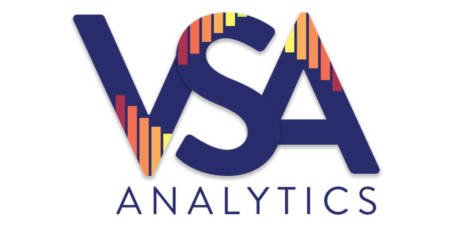Using data to prove that a college or university provides value is no easy feat. Higher education collects an exorbitant amount of information that can be used to measure the performance of students, faculty, facilities and the institution as a whole, but where do educators even begin?
Proving value and analyzing performance starts by identifying your key performance indicators (KPIs). Read on to dive into topics like:
4 Ways Higher Education Can Make the Most of Their KPIs
What Are KPIs?
KPIs are performance metrics that can be tracked, measured and analyzed. These are plentiful in the business and marketing world, as KPIs are used to create benchmarks and measure up the competition.
Higher education KPIs are used to understand how an institution, program, department, course or even a student is progressing toward their goals. KPIs are not goals themselves — they are the tools you need to understand and measure success.
Many higher education KPIs are mandatory, like the metrics required by IPEDS for any college or university that wants to participate in federal student funding programs. The U.S. Department of Education’s College Scorecard also aggregates metrics and presents them in an easy-to-read format for prospective students.
Higher Education KPI Example
The most talked about higher education KPIs right now are those related to enrollments. If an English department is seeing steady declines in certain courses, they can use the year-over-year enrollment KPI to see exactly when the enrollments are dropping and by how much. After monitoring this KPI for a certain period of time, the department can determine if these courses should be eliminated or merged into other sections.
A goal in this instance could be to increase section fill rates by 20% within the next two years. Of course, this will need to be evaluated to determine if it’s a feasible goal for the English department’s budget, and will require a team to develop a strategy to increase enrollments.
KPIs from AB 705
When AB 705 was introduced in California, community colleges were forced to adjust their curriculum and placement processes. Instead of solely relying on placement test tests, AB 705 now requires community colleges to factor in high school grades and GPAs.
“With AB 705, we had new metrics to track: Students’ high school grades and GPAs,” said Jonathan Newnam, IT Business/Technical Analyst at American River College.
“Since we’ve incorporated a model that bases placement off of high school GPAs, the number of students completing transfer-level English and math courses in their first year has increased substantially. It’s been a key indicator that AB 705 is working.”
4 Ways Higher Education Can Make the Most of Their KPIs
As you can see by the examples above, KPIs are really just a starting point. To really see the benefits, institutions should make the following four steps a priority.
1. Set Goals & Targets
Before anything, you need to set firm goals and targets. But simply stating that you’d like to increase enrollments isn’t specific enough, and leaves too much room for subjectivity.
Think of it this way: It’s one thing to say, “I want to lose weight,” but what does that mean? Why do you want to lose weight? Do you want to lose one pound or 10? And how quickly do you want to lose the weight? A blanket statement with no plan behind it will only set you up for failure.
Northeastern Illinois University (NEIU) maintains a public KPI progress report, including a list of their target values and upcoming measurement dates. Their goals are clearly defined and incorporate survey results, frames of reference, measurement frequencies and visual charts. Looking at this progress report, it’s evident that NEIU has a clear focus on their goals and how certain KPIs will help them get there.
2. Plan & Measure Strategically
An institution’s strategic plan should paint a vivid picture of their goals and vision for the year, and this is where KPIs can play a significant role.
Is one of your college’s goals this year to expand the nursing program? You’ll need KPIs to establish a baseline of how the program was performing before the expansion, and then track the performance of the program after the expansion. Over time, KPIs like enrollments, course success rates and passing rates for licensing exams will show whether the expansion was a success.
3. Assemble the Right Team
In higher education, KPIs must be identified and agreed upon by a college or university’s president, vice president, deans, researchers and sometimes certain committees. The exact people involved will just depend on the extent to which the KPIs will be used — so specific metrics for an English department wouldn’t necessarily require input from the dean of psychology.
Once formally defined, KPIs will require the support of staff all across campus to drive the vision and direction you have in mind. Make sure to explain the strategies and goals behind your KPIs to everyone involved to ensure that everyone is on the same page.
4. Automate the Process
Higher education has traditionally favored manual processes for many administrative tasks, from Excel spreadsheets to PDF reports. But institutions have too much data to manually collect, manage and analyze the information necessary to track KPIs.
It’s in everyone’s best interest to implement a higher education data analytics platform that can do all of this heavy lifting for you. An automated software program will keep your data on demand for real-time views of KPIs like enrollments, faculty productivity, weekly student contact hours and more.
Think of the burden that falls on your institutional research department without an analytics program. They are the gatekeepers of the data, and spend much of their time fielding research and report requests when they could be focusing their energies on more strategic action items.
“Since we started using Precision Campus, it’s lessened the bottleneck that often occurs,” said Newnam. “Anyone on campus can find the data they need on their own, without submitting a research request. It’s definitely saved our research department time.”
29 KPIs for Higher Education
The KPIs that colleges and universities can pull from is seemingly endless, but we’ve compiled some of the most common ones below as well as use case examples. These are broken down into five categories:
- Financial
- Student Success
- Admissions & Enrollments
- Faculty & Staff
- Facilities & Resources
Financial
- Instructional Costs: Evaluate the cost of part-time and full-time faculty members.
- Administrative Costs Per Student: Understand how much your institution is spending on administrative services on a per-student basis.
- Program & Department Budgets: Analyze budgets by term, semester or year and compare with actual spend.
- Revenue, Grants & Funding: Alumni donations, endowments, research grants, fundraising efforts, federal funds and other monetary benefits.
- Student Financial Aid Percentages: Track the number of students receiving scholarships or government aid.
- Tuition Costs: Monitor costs accrued by students on a semester or annual basis.
Financial KPI Example:
Using an instructional budgeting tool, you can compare the cost of employing part-time vs. full-time faculty members. Can you cut costs by adding another course to a full-time professor’s schedule? Tracking instructional costs will help you better allocate faculty resources and avoid making arbitrary cuts.
Student Success
- Graduation Rates: The percentage of students who graduate and the amount of time it takes them.
- Course Success Rates: Monitor completion rates on a course-by-course basis.
- Persistence Rates: Understand and monitor the factors that affect students’ persistence on to the next semester.
- Student Engagement: The number of students who study abroad, live on campus, participate in research activities, are enrolled in honors programs, etc.
- Student Outcomes: Keep track of students after graduation to see where their education takes them.
- Disproportionate Impact: Measure gaps between certain cohorts and your overall student body.
- Passing Rates for Licensure Exams: Evaluate the effectiveness of your programs in preparing students for licensing exams.
Student Success Example:
Inside Higher Ed reports that “first-generation students enroll and graduate at lower rates than do other students.” Looking at your graduation rates broken down by the first-generation cohort will tell you if this is true. If so, a goal might be to increase six-year graduation rates for first-generation students. You can also use your course success rates KPI to identify areas where these student may be struggling on a more granular level.
Admissions & Enrollments
- Transfer Rates: How many students who apply and are accepted are transferring from other institutions?
- Acceptance Rates: The percentage of students who applied and were accepted. Compare your rates to other schools to measure your competitiveness.
- Student Acceptance by Zip Code: See where your students are coming from, and use the information to tailor marketing programs.
- Year-Over-Year Enrollment: Monitor daily enrollment data to make year-over-year comparisons.
- Retention Rates: What percentage of students return for the next semester?
- Recruitment Marketing Programs: Measure the success of each marketing campaign.
Admissions & Enrollments Example:
Low retention rates can be a sign that students are struggling. A common KPI here is first year to third year retention rates. Are students making it past their first year, or are they dropping out or transferring to different institutions? Keeping track of retention rates can help you dive deeper and strategize ways to increase student persistence.
Faculty & Staff
- Faculty Workload & Productivity: Keep track of your instructors on an individual and departmental basis.
- Student-to-Faculty Ratio: The number of students per faculty member, on a campus-wide basis or by department.
- Faculty & Staff Tenure Rate: The length of employment for faculty members and other support staff members.
- Faculty Turnover: Supporting tenure numbers, turnover rates identify areas with weak employee retention.
- Part-Time vs. Full-Time Faculty: Examine the costs and benefits for both types of instructors.
- Weekly Student Contact Hours: Analyze productivity by certain courses, sections, instructors and other variables.
Faculty & Staff Example:
When student-to-faculty ratios increase, the quality of the instruction could decline. This could occur after merging two course sections or eliminating a part-time faculty position. Keeping a close eye on this KPI will give you an idea of whether you made the right call.
Facilities & Resources
- Section Fill Rates: Identify the number of enrollments for each section of each course.
- Classroom Utilization: See when, where and how classroom resources are being used.
- Sustainability: Evaluate emissions, keep track of LEED certification data and monitor utility spends.
- On-Campus Housing & Commuters: Know the lifestyle of your students to influence future campus upgrades.
Facilities & Resources Example:
Looking to create a “greener” campus? Checking your classroom utilization metrics will show you the areas of campus that may be wasting utilities, while sustainability data can give you insights into where your emissions are highest.
No matter the KPI, Precision Campus is here for all of your data tracking needs. Check out our demo environment or sign up for a free version of our data analytics platform here.


